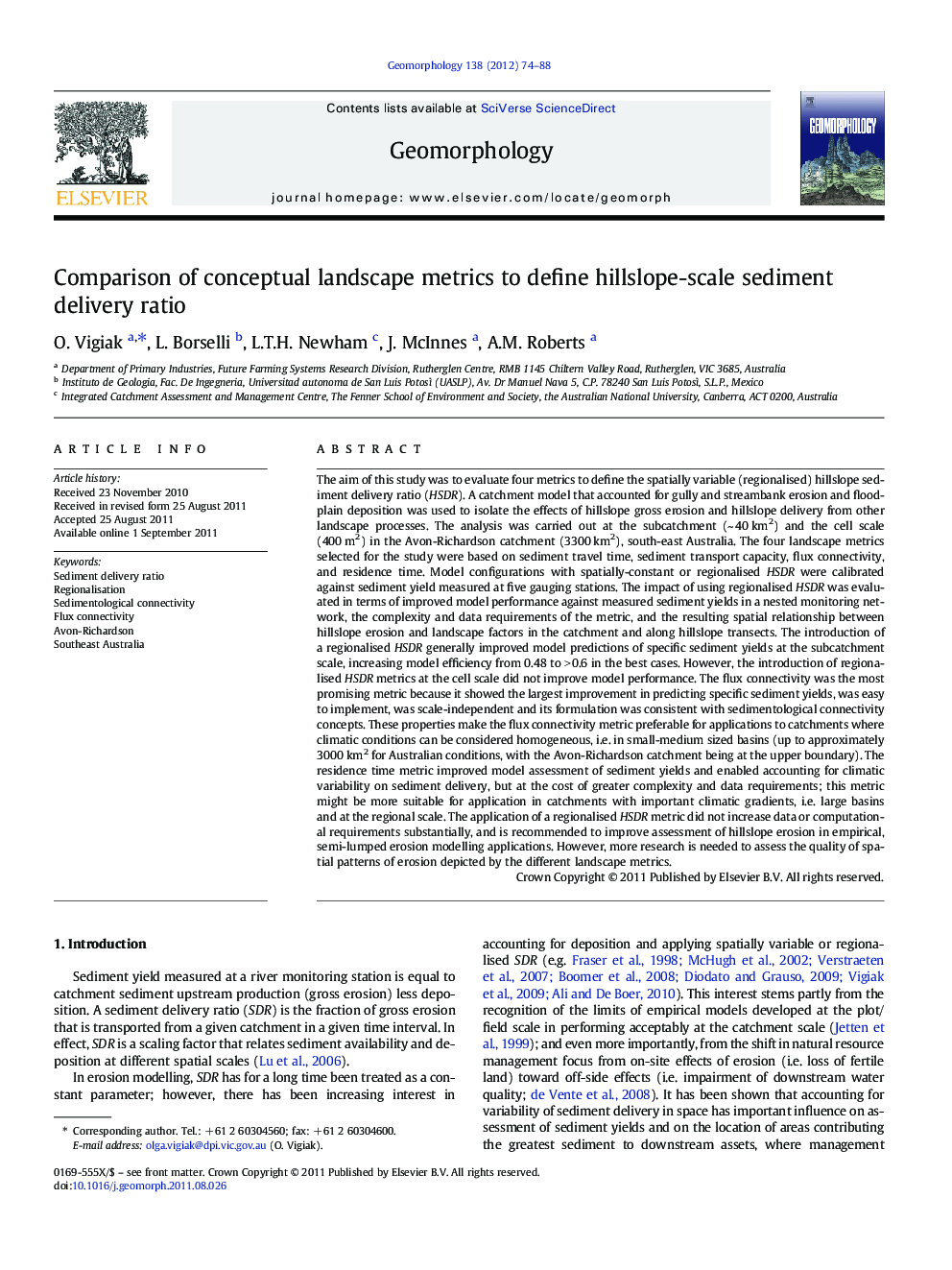| کد مقاله | کد نشریه | سال انتشار | مقاله انگلیسی | نسخه تمام متن |
|---|---|---|---|---|
| 4685348 | 1349485 | 2012 | 15 صفحه PDF | دانلود رایگان |

The aim of this study was to evaluate four metrics to define the spatially variable (regionalised) hillslope sediment delivery ratio (HSDR). A catchment model that accounted for gully and streambank erosion and floodplain deposition was used to isolate the effects of hillslope gross erosion and hillslope delivery from other landscape processes. The analysis was carried out at the subcatchment (~ 40 km2) and the cell scale (400 m2) in the Avon-Richardson catchment (3300 km2), south-east Australia. The four landscape metrics selected for the study were based on sediment travel time, sediment transport capacity, flux connectivity, and residence time. Model configurations with spatially-constant or regionalised HSDR were calibrated against sediment yield measured at five gauging stations. The impact of using regionalised HSDR was evaluated in terms of improved model performance against measured sediment yields in a nested monitoring network, the complexity and data requirements of the metric, and the resulting spatial relationship between hillslope erosion and landscape factors in the catchment and along hillslope transects. The introduction of a regionalised HSDR generally improved model predictions of specific sediment yields at the subcatchment scale, increasing model efficiency from 0.48 to > 0.6 in the best cases. However, the introduction of regionalised HSDR metrics at the cell scale did not improve model performance. The flux connectivity was the most promising metric because it showed the largest improvement in predicting specific sediment yields, was easy to implement, was scale-independent and its formulation was consistent with sedimentological connectivity concepts. These properties make the flux connectivity metric preferable for applications to catchments where climatic conditions can be considered homogeneous, i.e. in small-medium sized basins (up to approximately 3000 km2 for Australian conditions, with the Avon-Richardson catchment being at the upper boundary). The residence time metric improved model assessment of sediment yields and enabled accounting for climatic variability on sediment delivery, but at the cost of greater complexity and data requirements; this metric might be more suitable for application in catchments with important climatic gradients, i.e. large basins and at the regional scale. The application of a regionalised HSDR metric did not increase data or computational requirements substantially, and is recommended to improve assessment of hillslope erosion in empirical, semi-lumped erosion modelling applications. However, more research is needed to assess the quality of spatial patterns of erosion depicted by the different landscape metrics.
► We evaluated four approaches to regionalise hillslope sediment delivery ratio (HSDR).
► Regionalised HSDR improved model prediction of sediment yields at subcatchment scale.
► Regionalisation of HSDR largely influenced location of hillslope erosion sources.
► The flux connectivity approach was recommended in small to medium catchments.
► The residence time approach was recommended for large basins and at regional scale.
Journal: Geomorphology - Volume 138, Issue 1, February 2012, Pages 74–88